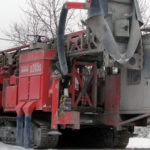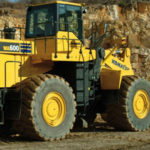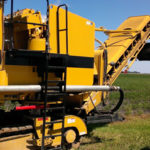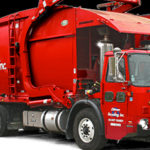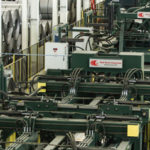HIGH PRESSURE OIL PURIFIER FOR HYDRAULIC AND TRANSMISSION
In a closed loop hydraulic or transmission, metal particles continuously multiply as metal flows through the system at high speed and pressure which causes very abrasive conditions to pumps, valves, seals and cylinders. Metals also act as a catalyst and accelerates the oxidation of the oil. Oxidation takes place when the antioxidant additives are neutralized by the formation of acids.
The 5 micron or smaller particles are the most damaging because they can fit through very tight tolerances and continue to cause wear. Servo valves and pumps have critical clearances of 1 to 10 microns and are very sensitive to wear from fine debris particles.
Dirt particles get in through tank breathers, cylinder seals and other access points. Condensation from temperature changes and leaking oil cooling systems contaminate oil with water. This combination of metal particles, water and oxygen at high temperatures will oxidize the oil more rapidly. During the oxidation process, polymerization causes adhesive molecular structures, which turn into sludge. This resinous sludge, or varnish, is a dark color and leaves deposits on many parts within the hydraulic system.
Fresh Hydraulic fluid is contaminated and typically contains more than 75,000 solid particles larger than 5µ per 100ml. Pumps, valves, pipes, hoses, heat exchangers and oil tanks all introduce dirt into the system. This debris accumulates in the system causing wear and the production of more wear particulate throughout.
Replacing the oil from the reservoir alone does not remove a majority of the particles, they are still present throughout the lines, pumps and cylinders. Since the system is always introducing more dirt, the idea of changing oil to keep a system clean is not enough, but a continuous oil polishing system that keeps up with the removal of harmful contaminants at all times will keep your equipment running newer, cleaner and longer.
According to a study done at MIT, approximately 70% of all equipment’s usefulness loss is due to surface degradation. In a case study performed by General Motors and published by the Society of Automotive Engineers (SAE), it was determined that engine service life could be extended EIGHT TIMES when 5-micron filtration is implemented vs. the standard 40-micron filtration.






